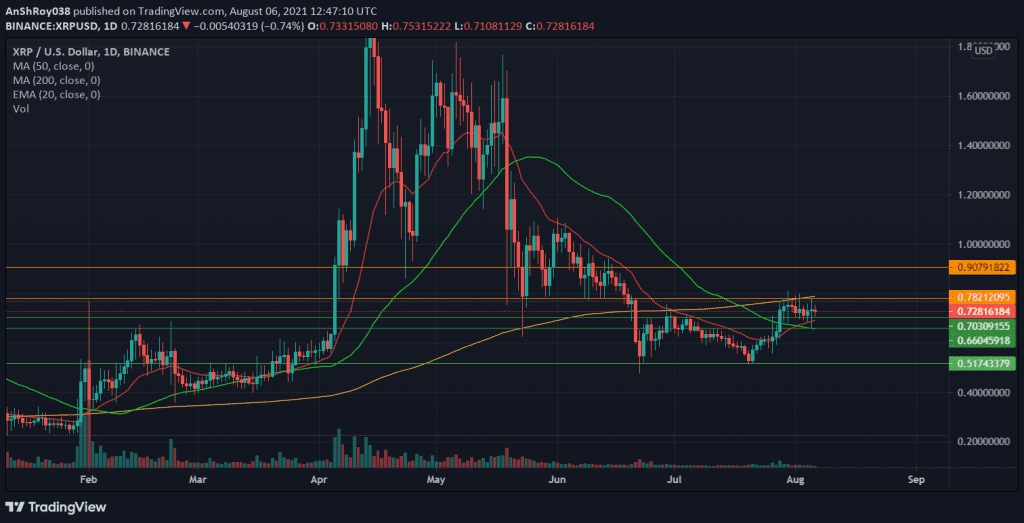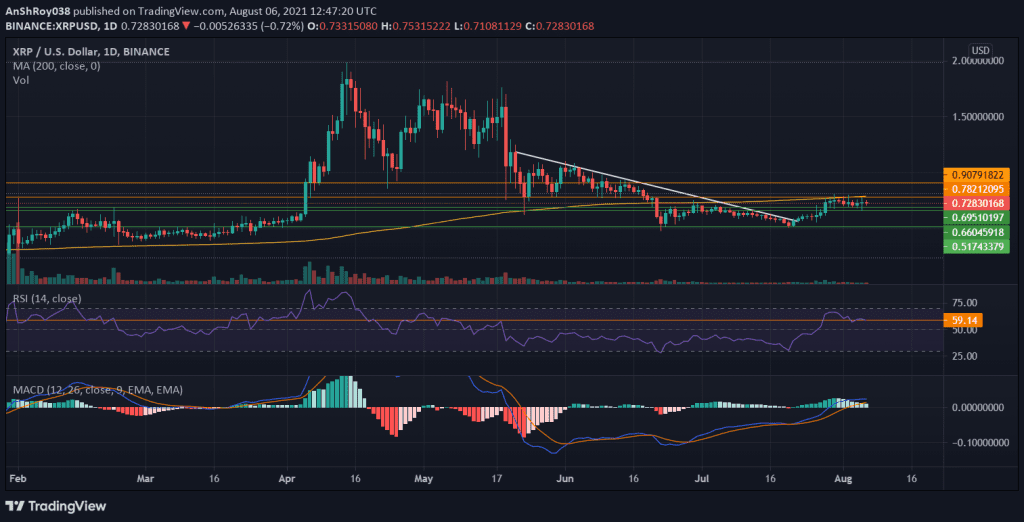
Key Takeaways:
- Ripple CTO David Schwartz proposed introduction of federated sidechains on the XRP ledger.
- If implemented, the change will allow implementation of smart contracts adjacent to the XRP ledger.
- However, XRP prices continued their horizontal movement.
NEW DELHI (CoinChapter.com) — Ripple Chief Technology Officer, David Schwartz, proposed introducing federated sidechains to the XRP blockchain, which will help implement smart contracts adjacent to the XRP ledger.
Although Ripple has resisted entering the smart contracts world, the massive growth of the DeFi sector has increased the demand for smart contracts.
Meanwhile, XRP, Ripple Labs’ native cryptocurrency, continued its sideways movement. Nevertheless, the digital asset has managed to close above $0.70 for the last seven days.
Ledger With A Side Of Blockchains
Ripple did not work on smart-contract capabilities as the fintech firm did not want to lose focus from its payment operations, Mr. Shwartz said in a blog post.
However, demand for smart contracts increased with the growth of DeFi. Hence, the CTO proposed federated sidechains for the XRP ledger, calling it “the best of both worlds (DeFi and payments).”
Federated sidechains are blockchains that operate alongside other blockchains.
The federated sidechain’s working depends on a piece of software called federator. In detail, a federator connects to two or more instances of the XRP ledger software. Furthermore, the federator connects to the XRP Ledger Mainnet on one side and one or more sidechains on the other.
Also, Read: SEC vs. Ripple lawsuit gets more convoluted with the entry of Binance.
For developers, a federated sidechain would mean native DeFi capability and smart contracts.
Moreover, the CTO shared that developers managing a sidechain would have the freedom to choose how it operates. Developers can implement native smart contracts that interact with XRP and XRP Ledger. At the same time, the XRP Ledger can maintain its “existing lean and efficient feature set.”
Federated Sidechains have many immediate advantages, such as horizontal scaling, as they can have their fee system, reserve system, and transaction capacity. Additionally, the XRP Ledger is not at risk, while anyone can start with a complete system ready out of the box with minimal effort.
The CTO also added that implementing the sidechain feature will require minimal changes to the XRPL software.
XRP Price Trends
Ripple prices are moving laterally on the daily chart. However, a positive for the bulls is that XRP has not broken below the support for now.

The 200-Day (Yellow) Moving Average trendline continues to act as resistance for XRP at $0.782. Although XRP breached above the resistance thrice (July 30 and August 1-2) in the past seven days, the altcoin always pulled back.
If prices break out above the resistance, the next resistance at $0.90 will cap any upside movement. On the other hand, the 20-Day (Red) Exponential MA trendline acts as dynamic support for the altcoin. Immediate support for the token is $0.703.
Also Read: Bitcoin hits $40K ahead of crucial US jobs report.
Although XRP breached $0.703 multiple times between July 30 to August 6, the altcoin has always rebounded from the next immediate support at $0.6604. Thus, the support at $0.6604 is critical for XRP.
XRP is trading above its 50-Day (Green) MA trendline, making it bullish in the short-term range.

The MACD momentum oscillator is slowly moving towards bearish regions, as the declining MACD histogram bars highlight.
The histogram plots the difference between the MACD line (Difference of 12-Day and 26-Day EMA) and the MACD signal line (9-Day EMA of MACD). Declining bars indicate the MACD line is moving towards its signal line and may soon cross below it, meaning the momentum will quickly turn bearish for XRP.
The relative strength index for XRP is neutral at 59.14, with the RSI trendline moving horizontally.
At the time of writing, XRP was trading at $0.7317, down 0.25 % on the day.


